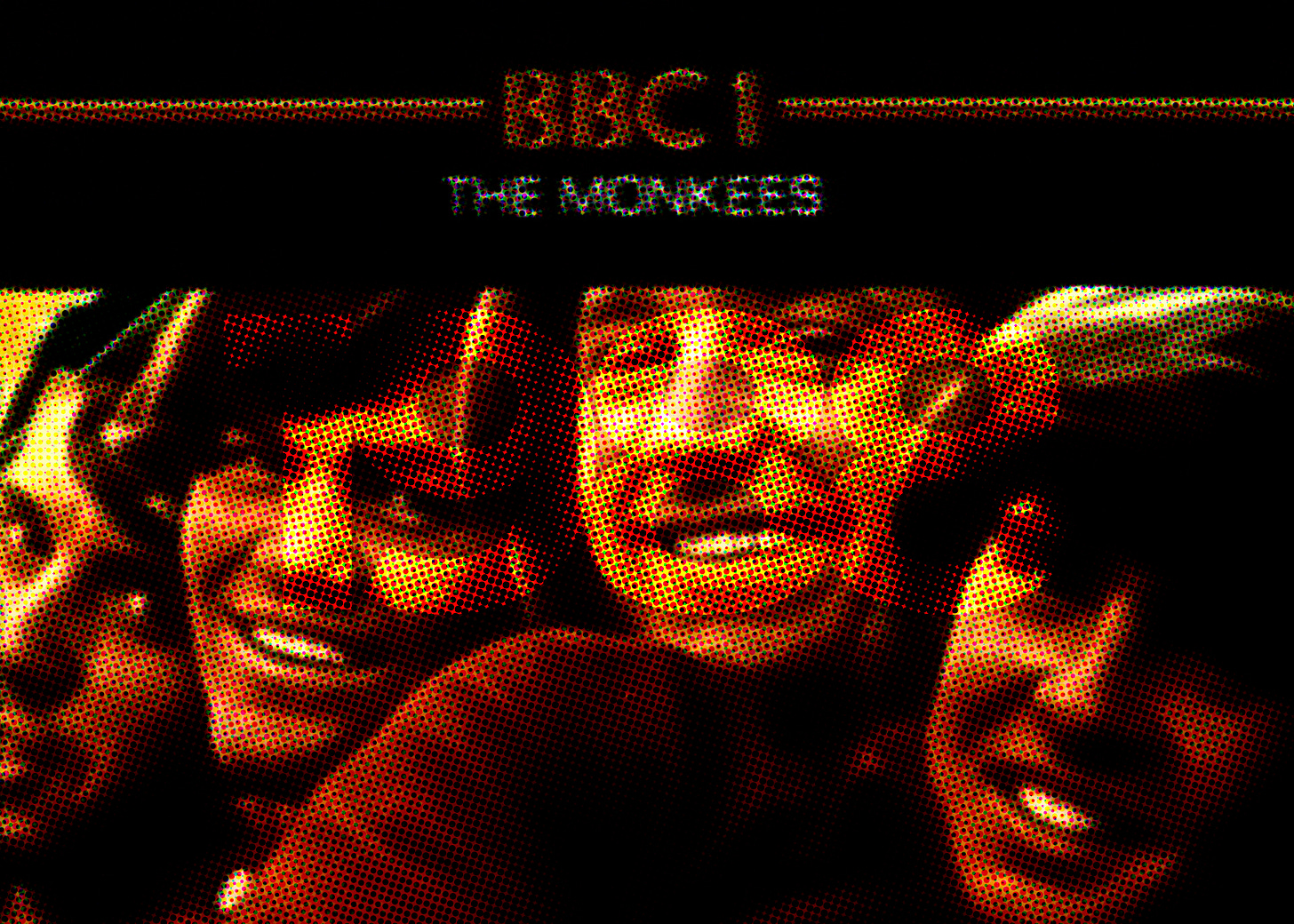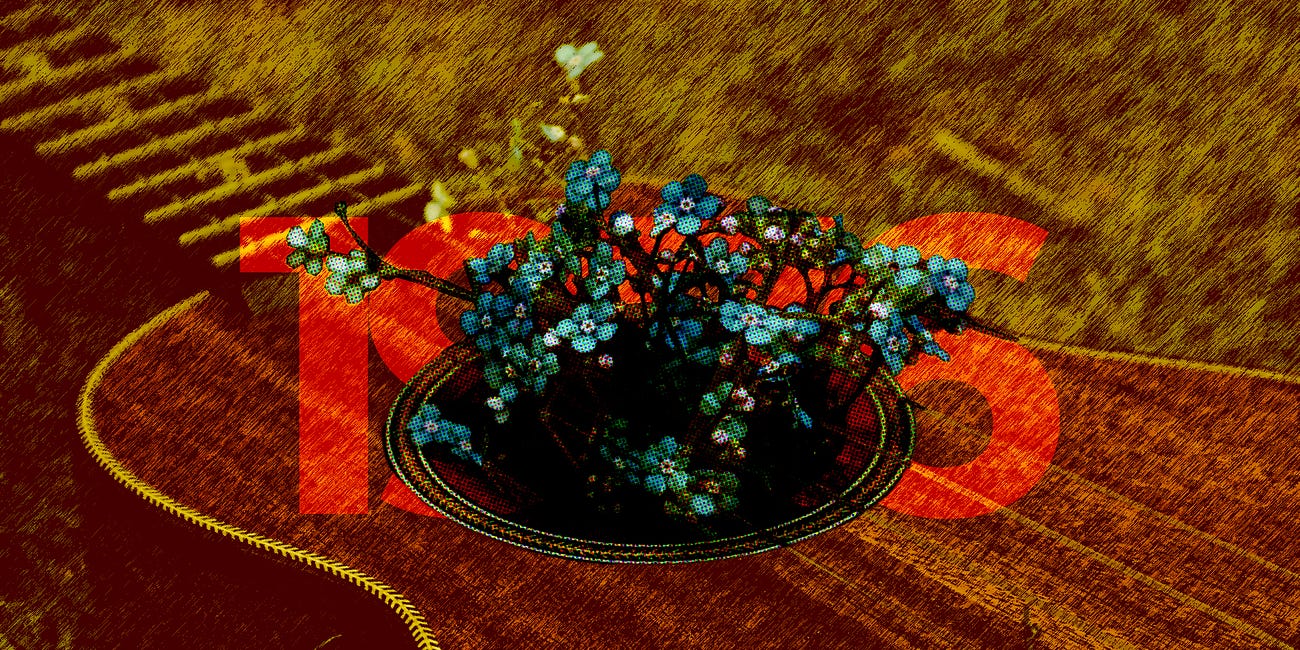Strange how potent cheap music can be. It can preserve a moment, trapped in vinyl, and it can last a lifetime, accompanying, inspiring, supporting. Year by year, these are the songs that have soundtracked our lives.
Hey, hey, we're the Monkees
In 1988, on the way through Hong Kong airport1, I bought two tapes to listen to on my Walkman on the flight home. I had been listening to a lot of traditional Chinese music for the past two weeks and was craving a shot of Western pop. One of these tapes would, at the time, have seemed like a likely choice and one of them would have seemed weird. I suspect those positions are reversed now.
The first tape was the eponymous debut album by the dream goth band All About Eve. They’d vaguely troubled the upper reaches of the Top 40 the year before but their single ‘Martha’s Harbour’ was just about to reach your actual Top 10. Albeit at number 10, but it still counts. They were a hip, new, vaguely indie band and exactly the sort of thing that a dreamy goth like me was going to listen to. These days, though, if All About Eve are remembered for anything, it’s for their disastrous appearance on the BBC’s leading pop show Top of the Pops.
The other tape I bought was the compilation ‘Then & Now… The Best of The Monkees’ (1986). This would have seemed much the stranger choice at the time. The Monkees were still seen as a cartoonish, ‘fake’ boy band known for faddish, plastic pop hits. It's not that we weren’t listening to ‘60s music in the late ‘80s; if anything, it was hard to avoid. But we were supposed to be listening to hallowed, serious legends such as Jimi Hendrix, not fun cheeky chappies from a kids’ TV show.
And people say we monkey around
(Video from The Rewind Team)
But I had grown up with The Monkees. In August 1981 the BBC started showing episodes of their eponymous TV show (1966–68) as part of its children’s programming during the summer holidays. The show had been the brainchild of Bob Rafaelson; the production company he ran with Bert Schnieder, Raybert, was also behind the production of Easy Rider and other New Hollywood hits.
The Monkees brought a lot of these new approaches to the small screen. Rafaelson’s basic idea had been to create a TV version of The Beatles’ movie A Hard Day’s Night (1964), which itself had been deeply influenced by French Nouvelle Vague styles, with its inventive editing and energetic, handheld filming. These techniques fed through into New Hollywood, and also into The Monkees.
Inventiveness was paired with a traditional approach to the material. The Monkees themselves – Mike Nesmith, Mickey Dolenz, Peter Tork and Davy Jones – were as much Groucho, Chico, Harpo and Zeppo as they were John, Ringo, George and Paul. Although studded with ‘hip’ cultural references (which inevitably went out of date fast), jump cuts, film speeds and weird story structures, their basic approach was kid-friendly slapsticking and wisecracking.
All this created an image of the West Coast ‘60s as neither hippie drop-out culture nor politically revolutionary, but rather as elements of both melded together: friendly, sunny, unruly, inventive. Fun. It was the perfect summer holiday viewing: light, bright, energetic, enjoyable and packed with amazing music.
But we're too busy singing
Singing bubblegum pop to a kiddie audience meant The Monkees weren’t taken seriously at the time or, indeed, in the late ‘80s. It also didn’t help that they didn’t play the instruments on their early hits. The Monkees had been recruited by Raybert as TV actors; their early hits were written by Tin Pan Alley professionals and recorded by session musicians (including the famous Wrecking Crew). Only at the end would Mickey or Davy be drafted in to sing vocals over the track.
None of these things were particularly unusual in the ‘60s, so the scorn they attracted was somewhat unfair. There’s a good argument, for example, that the Jimi Hendrix Experience was the creation of Chas Chandler, their manager. The Wrecking Crew played extensively on both The Beach Boys’ Pet Sounds and Smile. And plenty of artists recorded songs written by professional songwriters. Indeed, The Monkees earned abuse for recording a version of the song ‘Mary, Mary’, previously recorded by the Paul Butterfield Blues Band, until it was discovered that the song had, in fact, originally been written by Mike Nesmith.
Ironically, most of The Monkees were competent – and to a degree, professional – musicians. Nesmith had worked as a singer and songwriter2; Peter Tork was a multi-instrumentalist and veteran of the Greenwich Village folk scene; and Davy Jones had played the Artful Dodger in Oliver! on Broadway. Mickey Dolenz was more of an actor than a musician, but even he had been in bands. Once he learned to play the drums The Monkees were finally allowed to play on their own records.
These travails only added to their appeal. They were like a model of the ‘60s music industry, from bubblegum pop to album oriented rock; and they were also like a model of a growing up, from contained childhood to ornery adolescence. As you grow older you move on from the perfect pop of Neil Diamond’s ‘I’m a Believer’, through the sunny cynicism of Carole King’s ‘Pleasant Valley Sunday’, and on to the psychedelic patter of Mickey Dolenz’s ‘Randy Scouse Git’. The Monkees were LA scene hipsters, after all; they recruited The Jimi Hendrix Experience to support them on tour and scare all their teen fans. Their own music was never going to be as mainstream as the perfect pop written for them.
All this culminated in The Monkees film Head (1968), a film that starts with The Monkees committing suicide and just gets weirder from there. It grew out of a brainstorm session involving The Monkees getting stoned with Bob Rafaelson and Jack Nicholson, after which Nicholson dropped a tab of acid and wrote the screenplay. And it shows. It is a splendidly late-‘60s West Coast confection, and ideal viewing for any teenager who grew up watching The Monkees on TV. Not only is it fantastically silly and obscure; it catches perfectly that adolescent wish to see your childhood favourites recontextualised and unexpectedly adult, the same spirit that brought us ‘The Trumpton Riots’ by Half Man Half Biscuit and Peter Jackson’s Meet The Feebles (1989).
To put anybody down
All this has meant that I’m still a fan, forty years later. It is a Metropolitan tradition to go on a Christmas cinema trip, and my trip last year was to the Garden Cinema in Covent Garden to watch a The Monkees Christmas episode on the big screen.
Anything read, listened to or watched in childhood is likely to have unlikely repercussions in adulthood. The Monkees, along with The Beatles in Help (1965) and numerous super-teams like Thunderbirds and G-Force, gave me a wholly unrealistic set of expectations for living in a shared house as a young adult. The life of the Monkees – four friends who get to hang out all day having whimsical adventures and larking about – seems like the perfect life to a child, and is absolutely part of why the Harry Potter series is so popular.
Moreover, a band is the ideal form for male friendships. Like a sports team, it gives everyone an excuse to get together and gives them something to do when they do. They all have something to talk about and, like those super-teams, they all have assigned roles which come with pre-determined characteristics (ask a musician for a drummer joke if you need an example). When I finally got to live in a shared house with my friends, our lives were admittedly a little more The Young Ones than The Monkees; but some of us were, at least, in a band. And the only cover we played was Circle Sky, a Monkees song (written by Mike Nesmith) from the soundtrack of Head.
For more on the unexpected resonances of the music of childhood, try Rowan’s piece on the sounds of ‘76
1976: The potency of cheap music
Strange how potent cheap music can be. It can preserve a moment, trapped in vinyl, and it can last a lifetime, accompanying, inspiring, supporting. Year by year, these are the songs that have soundtracked our lives.
I’d been on a school trip to China, the year before Tiananmen Square. Aleksandr Solzhenitsyn’s son Yermolai was with us. It was a strange experience.
was delighted to discover he also wrote ‘Different Drum’, which I shared in a Metropolitan playlist last year, performed by the Stone Poneys.






I also loved the Monkees— they were tremendous— and they merge with the Banana Splits for me. I always thought it was because they were equally bonkers, but maybe they were on after each other like Lou says (never considered that possibility before….)
Have you heard Mike Nesmith’s version of Different Drum, Tobias? Nothing will shake my love for the Linda Ronstadt version, but this is also fab
https://open.spotify.com/track/3CCnivgdriWwvr8KWTMg1Q?si=QwmO4Tv_Te-5SwAkSigNoQ
I have very hazy memories of The Monkees TV show. I think it may have been on after The Banana Splits? Weirdly though, Daydream Believer was the soundtrack to my A levels - it’s the one track I can recall from the mixtape that was constantly playing in our sixth form common room.